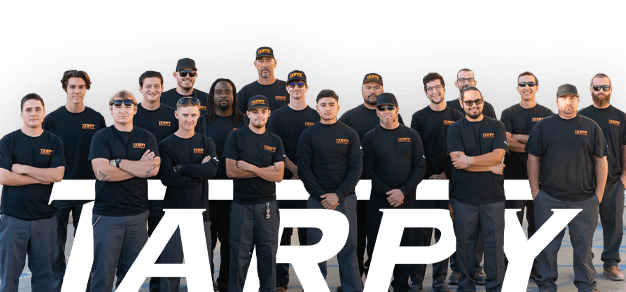According to statistics, heating accounts for approximately 45% of your home’s energy consumption. You can, therefore, reduce your household’s utility expenses by managing heating more efficiently. One way to accomplish that is to acquire a high-efficiency furnace. Here is what you need to know about energy-efficient furnaces.
What Is a High-Efficiency Furnace?
The efficiency of a heating system describes the proportion of the energy from the fuel it can convert into warm air. No furnace can attain 100% efficiency, but high-efficiency systems are designed to keep waste to a minimum.
The AFUE rating of high-efficiency furnaces is between 90% and 98%. AFUE stands for Annual Fuel Utilization Ratio and is used primarily for gas furnaces. Mid-range systems have an efficiency of 80% to 85%.
An 85% AFUE rating generally means the furnace wastes about 15% of the fuel. By switching to a more fuel-efficient model, you can reduce your energy bills. Additionally, high-efficiency models have a robust assembly of components, extending their lifespan.
Electric Ignition and Heat Exchangers in High-Efficiency Furnaces
One of the noticeable features in new furnace models is an electric ignition. Older low-efficiency models still use a standing pilot light to light the gas. Unfortunately, the flame consumes gas around the clock. The standing pilot can also pose fire and carbon monoxide hazards when faulty.
A high-efficiency furnace also has two heat exchangers. The purpose of the secondary heat exchanger is to absorb the heat from the exhaust fumes. It is called a condensing furnace since the secondary exchanger produces vapor after absorbing heat. The system will then drain the water through the condensate line.
The heat exchanger must be resistant to corrosion and the effects of moisture. Most heat exchangers are made of stainless steel so they last longer without developing cracks. At Tarpy Plumbing, Heating & Air, we recommend checking the heat exchanger’s warranty before purchasing a high-efficiency furnace. The warranty can help you gauge the unit’s durability and performance.
Benefits of Variable-Speed Systems
One of the control features of a high-efficiency furnace is variable-speed controls. A mid-range system often has single-speed motors which run at an output of 100%. That means they cannot adjust to varying temperature loads. Single-speed systems are usually noisy and sometimes unreliable.
Variable-speed systems run on an electronically commutated motor (ECM) that can adjust speeds depending on the heating load. ECMs can generate a constant airflow to prevent the system from switching on and off continuously.
Variable-speed systems generate more torque to push conditioned air to different parts of your home. This facilitates the filtration of pollutants as the air goes through the filter.
In San Diego, the relative humidity levels are often over 60%, even in January. A variable-speed system provides constant airflow that makes dehumidification more efficient. That way, it enhances comfort and reduces the running costs for your system.
The Multi-Stage Valve System
Energy-efficient furnace manufacturers are increasingly integrating multi-stage valves for better heat regulation. A single-stage valve regulates the gas flow around two values: on and off. The valve will release the same amount of gas regardless of the weather conditions in winter.
A multi-stage valve will adjust the gas flow according to the heating requirements of the house. Therefore, it avoids problems common with single-stage systems such as cold and hot spots. With single-stage valves, you may have warmer interior areas and colder outer rooms in the building.
Since a single-stage valve has to keep stopping, it can trigger an issue with short cycling. The switching back and forth between on and off can deteriorate components in the system. A multi-stage valve can extend the life of the furnace. We recommend scheduling repairs promptly if you notice your system cycling.
Which Is More Efficient: A Gas or Electric Furnace?
Compared to gas furnaces, electric systems are more efficient. They convert most of the energy into warm air for your home. The principal drawback of gas furnaces is the heat lost through the venting system.
It is worth noting that efficiency refers to the ratio of energy use to heating output. It does not indicate the rate at which the system heats the room. On that note, gas furnaces burn fuel at higher temperatures than electric coils. This means gas systems can heat the room at a faster rate.
Because gas is a more affordable fuel, this type of furnace is recommended for regions with harsh winters. Its lower fuel costs can offset the difference in energy efficiency. But in warmer climates, installation and maintenance factors will probably determine your choice of heating system.
An electric heating system is more suited for warmer regions such as the one around San Diego. Electric heaters are easier to install and have fewer maintenance costs. An electric system may require a heavy-duty circuit suitable for the equipment’s electrical load. However, one of these is often less expensive to install than a gas furnace.
What Are the Limitations of an Energy-Efficient System?
An energy-efficient furnace consumes less energy per unit of work than its mid-range counterpart. However, the efficiency rating only describes the equipment’s ratio of input to output. It’s not an indication of performance on other aspects of home comfort.
While energy-efficient furnaces have systems to eliminate humidity or improve heating, specifications may differ. Different furnace models have varying performance features.
Even with a variable-speed system, you may need a purifier or dehumidifier to enhance comfort. The conditions of your home will determine whether you require an additional system for humidity or indoor air quality control. You can consult our indoor air quality team at Tarpy Plumbing, Heating & Air for outstanding home comfort services in the San Diego area.
Choosing Smart Thermostats for High-Efficiency Furnaces
High-efficiency heating systems have sophisticated controls that enable multi-stage valves and variable-speed motors to work. You can save more energy by acquiring a compatible smart thermostat.
If you have a high-efficiency furnace, you should choose a thermostat with a multi-stage label. That means it can work with the system control board to regulate temperatures more evenly. If you are worried about hot and cold spots, consider a device with zoning capabilities.
Some thermostats may require a C-wire to ensure the device has power round the clock. An incompatible thermostat may not offer all the benefits of a high-efficiency model. Consider consulting a certified HVAC professional if you are unsure.
Do I Need a New Furnace?
Replacing your current furnace is an expensive undertaking. It requires careful considerations of the benefits versus the costs of acquiring and running the new system.
A high-efficiency heater is costly to install, but if your system is approaching the end of its life, it’s better to opt for a replacement. A recent spike in energy bills indicates your existing system is becoming inefficient.
An aging system can raise indoor air quality concerns in the building. An inefficient furnace will frequently require repairs and part replacements. You can opt for a new model to enhance indoor comfort and boost your home’s safety.
At Tarpy Plumbing, Heating & Air in Santee, CA, we’re proud of our many years in the industry providing trusted heating and cooling installation, repair and maintenance to the locals. We also offer a full range of plumbing services. Our highly skilled and experienced team has established a reputation for exceptional craftsmanship and outstanding customer service. You can rely on our family-owned and -operated company. We’re accredited by the BBB with an A+ rating. If you’re considering purchasing a new furnace, we can arrange financing on approved credit. Call us today to schedule a consultation.


 SPECIALISTS
SPECIALISTS

